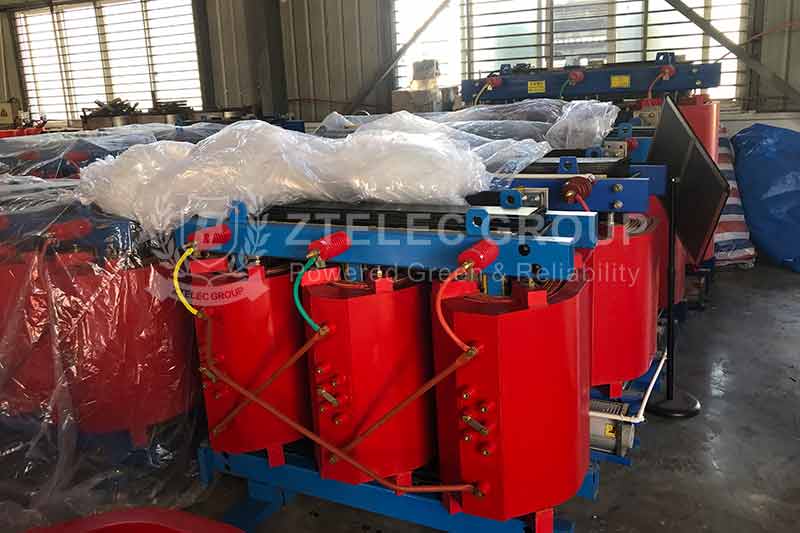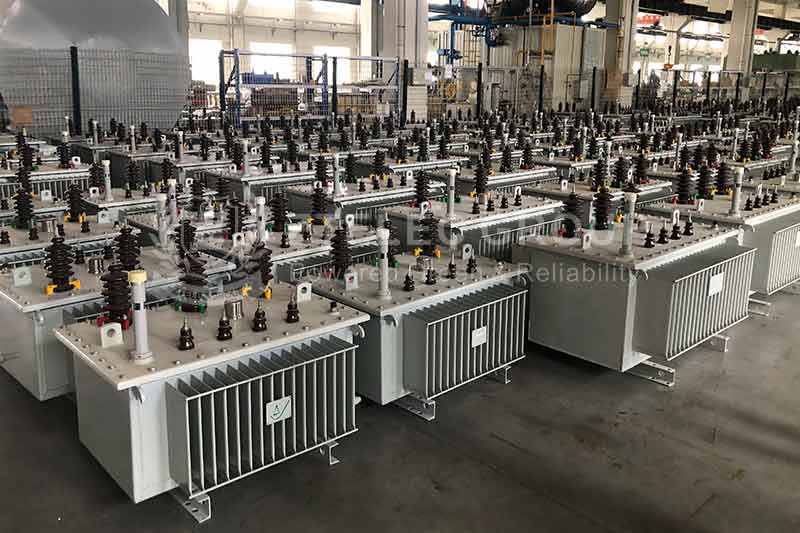Difference between dry type transformer and oil immersed transformer
Dry-type transformers and oil-immersed transformers are two common types of transformers used in various electrical applications. Understanding the comprehensive differences between these two types is crucial for selecting the most suitable option based on specific requirements. This article delves deeper into the distinctions between dry-type transformers and oil-immersed transformers in terms of cooling methods, safety considerations, maintenance requirements, environmental impact, and suitable applications.
1.Cooling Method:
Dry-Type Transformers:
Dry-type transformers utilize ventilation and special insulation materials for cooling.
The absence of insulating oil allows for efficient heat dissipation through natural convection and air circulation.
Oil-Immersed Transformers:
Oil-immersed transformers use insulating oil for cooling and heat dissipation.
The insulating oil absorbs heat from the transformer windings and transfers it to the transformer tank for dissipation, providing effective cooling.
Dry-Type Transformers
2.Safety Considerations:
Dry-Type Transformers:
Dry-type transformers are considered safer than oil-immersed transformers due to the absence of flammable insulating oil.
The risk of oil leaks, fires, and explosions is significantly reduced in dry-type transformers, enhancing overall safety.
Oil-Immersed Transformers:
Oil-immersed transformers pose potential risks of fire and explosion due to the presence of insulating oil.
Proper maintenance, monitoring, and safety measures are essential to mitigate the risks associated with oil-filled transformers.
3.Maintenance Requirements:
Dry-Type Transformers:
Dry-type transformers have lower maintenance requirements as they do not involve oil monitoring or replacement.
The absence of oil simplifies maintenance procedures and reduces the overall maintenance costs.
Oil-Immersed Transformers:
Oil-immersed transformers require regular oil testing, filtration, and replacement to maintain proper insulation and cooling properties.
Proper maintenance practices are crucial to ensure the longevity and efficiency of oil-filled transformers.
Oil Immersed Transformers
4.Environmental Impact:
Dry-Type Transformers:
Dry-type transformers have a lower environmental impact compared to oil-immersed transformers.
The absence of insulating oil reduces the risk of soil and water contamination, contributing to a more environmentally friendly solution.
Oil-Immersed Transformers:
Oil-immersed transformers using insulating oil can pose environmental risks through potential oil spills and soil contamination.
Proper disposal and recycling of insulating oil are essential to minimize the environmental impact of oil-filled transformers.
5.Suitable Applications:
Dry-Type Transformers:
Dry-type transformers are ideal for indoor applications where safety, cleanliness, and environmental concerns are paramount.
They are commonly used in hospitals, schools, office buildings, and other sensitive environments.
Oil-Immersed Transformers:
Oil-immersed transformers are suitable for outdoor and industrial applications where higher power capacities and better cooling properties are required.
They are commonly used in power plants, substations, industrial facilities, and large-scale electrical systems.
the choice between dry-type transformers and oil-immersed transformers depends on various factors such as cooling requirements, safety considerations, maintenance needs, environmental impact, and specific application scenarios. By understanding the comprehensive differences outlined above, users can make informed decisions when selecting the most appropriate transformer type for their unique electrical system requirements, ensuring optimal performance, safety, and efficiency.
- more+releated article
- 2025-12-13How to Select and Use Phenolic Cloth-base Lami
- 2025-12-13How Much Does Bakelite Sheet Cost? 2025 Price
- 2025-12-13Why are most 3240 epoxy boards yellow?
- 2025-12-13What are the Main Applications of FR4 Epoxy Bo
- 2025-12-13Why Does the Price of Insulating Paperboard Va
- 2025-12-13Heat-Resistant DDP Insulation Paper
- 2025-12-13Comparison of Heat-Resistant DDP Insulating Pa
- 2025-12-13G10 and FR4 Epoxy Boards: Commonly Used for Ge
- 2025-12-13The Price of Heat-Resistant DDP Insulation Pap
- 2025-12-13How to Choose Epoxy Laminate Materials for Gen







